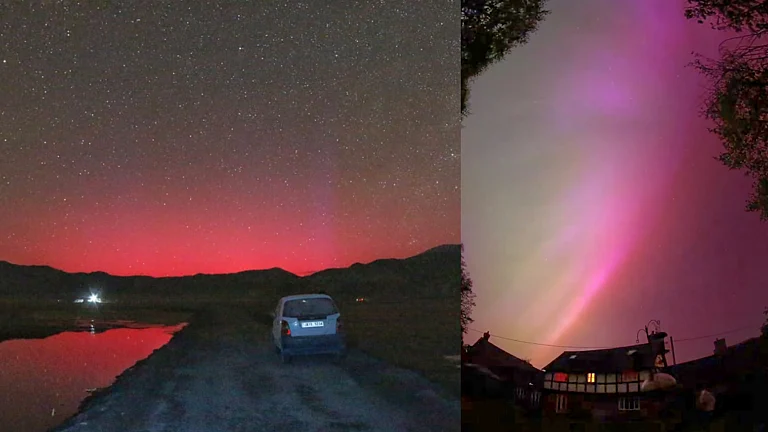Auroras, which are usually banished to the poles of the Earth, lit up night skies as far as South Africa last week. The world's strongest solar storm in two decades resulted in the night skies across the US, UK, Mexico, Canada, Russia, India and many other countries to light up in vibrant green, pink, blue and purples.
Behind Aurorae Lighting Up Skies Across The Globe, A Warning For More Solar Storms?
The world's strongest solar storm in two decades resulted in the night skies across the US, UK, Mexico, Canada, Russia, India and many other countries to light up. However, scientists have warned that these auroras are simply a sign of more solar storms.
However, despite the beautiful auroras taking over social media, scientists have stated that these auroras were simply a sign of more solar storms coming towards Earth.
Speaking to AFP News, European Space Agency has stated that behind all this beauty "there is an immense danger".
The Solar Storms of 2024 were the strongest to hit the Earth since 2003's 'Halloween Storms' which caused blackouts in Sweden and damaged power infrastructure and transformers in South Africa. Before that, a geomagnetic storm took out Canada's power grid in 1989.
As per Mike Bettwy from the US Space Weather Prediction Centre, scientists across the globe are now focusing on the "more sinister potential impacts of solar storms" such as black outs, taking out power grids and satellites or even exposing astronauts to dangerous levels of radiations.
While the recent solar storm caused less damage, scientists have added that this is definitely not the last of the solar storms the Earth will witness.
Solar Storms 'Definitely Not Over'
Solar storms occur due to massive explosions on the surface of the Sun, These explosions shoot out plasma, radiation and magnetic fields at incredibly fast speeds.
The recent solar storm was caused by a cluster that is expected to be at least 16 to 17 times the diameter of the Earth, hence being one of the strongest the planet has seen in over 20 years.
With this sunspot turning towards the Sun's disc, solar activity is expected to die down. However, in another two weeks, this sunspot will once again face the Earth and might just send more solar storms out way.
In the meantime, Alexei Glover, the weather service coordinator for ESA stated that another sunspot is "coming into view right now", adding that the solar activity is "definitely not over".
Dibyendu Nandi, head of the Centre of Excellence in Space Sciences in India at IISER Kolkata has also stated that the world is witnessing never before seen space weather.
"It might get worse as more solar storms are expected to impact Earth or maybe just more spectacular auroras for all," stated Nandi.

